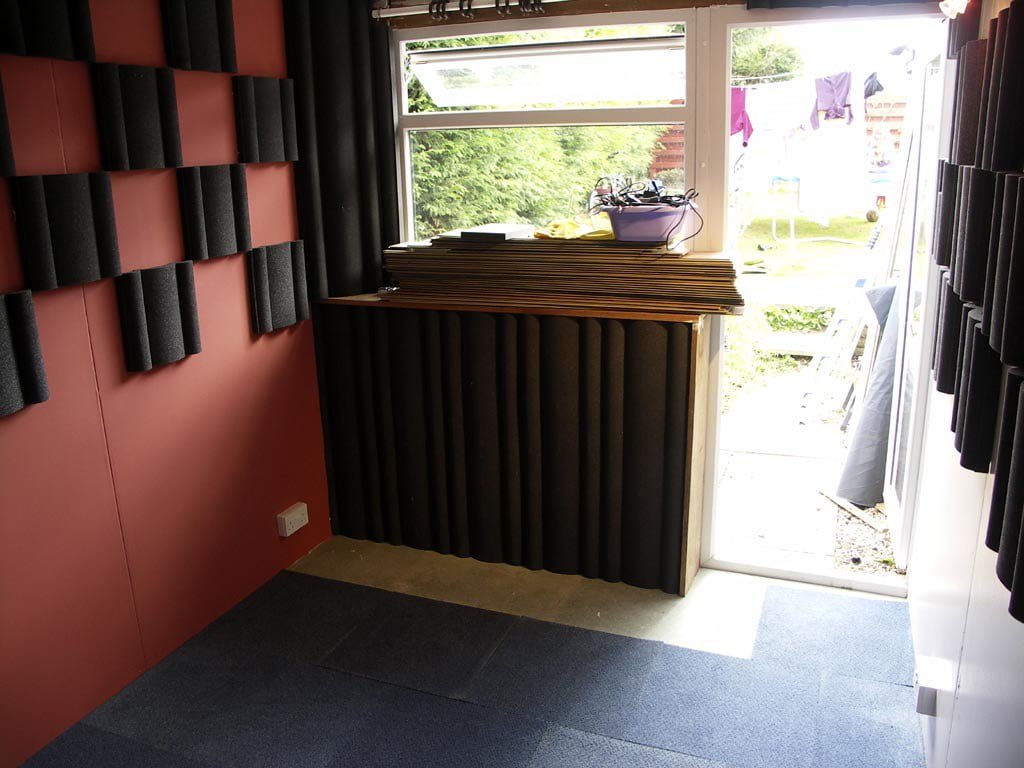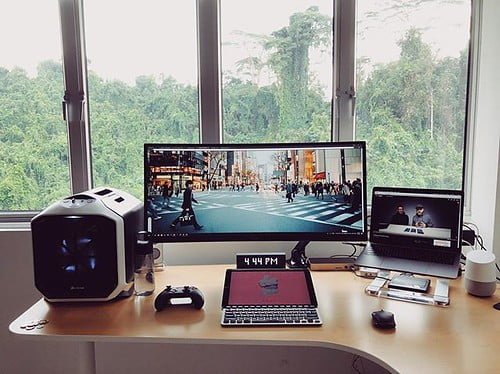Acoustic Treatment and Furniture: Balancing Functionality and Aesthetics
As I sit in a room filled with sleek furniture and subtle hues, the soft echo of voices bouncing off bare walls disrupts the serene ambiance. The challenge of striking a balance between acoustic functionality and aesthetic appeal in interior design is both intriguing and complex. How can we seamlessly merge sound-absorbing elements into our living spaces without sacrificing style? Join me as we explore the art of harmonizing acoustic treatment and furniture to create spaces that not only look stunning but also sound impeccable.
We are supported by our audience. When you purchase through links on our site, we may earn an affiliate commission, at no extra cost for you. Learn more.
Importance of Functional Acoustic Solutions
Enhancing the ambiance of a room through functional acoustic solutions is a transformative experience that elevates the auditory experience for all within its walls. Acoustic comfort plays a pivotal role in shaping the way we perceive and interact with our environment. By strategically placing acoustic panels and treatments, not only can we enhance the overall sound quality by reducing echoes and reverberations, but we can also create a space that fosters concentration and effective communication by minimizing unwanted noise interference.
Incorporating proper acoustic solutions is not just about improving sound quality; it is about fundamentally enhancing the acoustic comfort and functionality of a room. Imagine a well-designed space where every sound is crisp and clear, where conversations flow effortlessly, and where music resonates harmoniously. This is the power of functional acoustic solutions in interior design.
When it comes to achieving the perfect balance between aesthetics and acoustics, functional acoustic solutions are essential. These solutions seamlessly blend into the design of a room, enhancing its visual appeal while simultaneously optimizing its sound quality. By prioritizing both functionality and aesthetics, we can create spaces that not only look stunning but also provide an unparalleled auditory experience for all who enter.
Harmonizing Furniture and Sound Absorption
Incorporating furniture with sound-absorbing materials and features is key to harmonizing furniture with sound absorption in interior design. When selecting furniture pieces, opt for those with sound-absorbing materials like fabric upholstery or foam padding to enhance acoustic treatment. Look for pieces that go a step further by integrating built-in sound absorption features such as acoustic panels or sound-dampening technology.
A vital aspect of harmonizing furniture and sound absorption is choosing furniture designs that not only serve their practical purpose but also complement the overall aesthetic of the room. By striking a balance between functionality and aesthetic appeal, you can create visually pleasing spaces that offer superior acoustic qualities.
To achieve this balance, consider how sound-absorbing elements can be seamlessly incorporated into furniture placement. Strategically arranging furniture to optimize sound absorption in key areas can enhance the acoustics of the room without compromising its visual appeal. By thoughtfully integrating sound-absorbing materials and features into your furniture design, you can create a space that not only looks great but also provides excellent acoustic performance.
Enhancing Aesthetics Through Acoustic Design
When seeking to elevate the visual appeal of a space while ensuring sound control, incorporating acoustic design elements into furniture and décor proves to be a sophisticated and practical solution. By seamlessly blending sound-absorbing materials into furniture, not only do we enhance the aesthetic appeal, but we also add functionality that contributes to the overall design. Customizable acoustic panels that match furniture finishes, colors, and textures allow for a cohesive look that doesn’t ensure on sound quality.
Balancing aesthetics and functionality in furniture design involves integrating acoustic solutions that not only look visually pleasing but also work effectively to dampen sound and improve the Sound Transmission Class (STC) of a space. The artistry of acoustic design lies in creating visually appealing spaces that prioritize sound control without sacrificing style.
Incorporating acoustic elements into furniture and décor not only enhances the aesthetic value of a room but also ensures a harmonious blend of design and practicality. The careful selection and placement of these elements can transform a space into a visually pleasing environment while effectively absorbing sound to create a more comfortable and acoustically balanced setting.
Maximizing Space With Acoustic Furniture
To maximize space efficiently with acoustic furniture, one can seamlessly blend sound-absorbing elements into the room’s decor, enhancing both functionality and aesthetic appeal. Acoustic furniture offers a balance between practical use and sound management, providing customizable solutions for optimizing space. These pieces, such as soundproof partitions, integrated acoustic panels, and noise-absorbing bookshelves, not only serve their primary purpose of reducing noise interference but also contribute to the overall aesthetics of the room.
By incorporating acoustic furniture strategically, one can achieve space optimization without sacrificing style. For instance, utilizing multifunctional pieces like seating with integrated acoustic panels not only saves space but also enhances the room’s design. Customizable solutions in acoustic furniture allow for tailored approaches to specific sound absorption needs, ensuring that functionality remains at the forefront while blending seamlessly with the room’s aesthetic.
Maximizing space with acoustic furniture not only addresses sound issues but also adds a layer of sophistication to the room. The practical use of these pieces alongside their aesthetic appeal creates a harmonious environment where functionality and design coexist seamlessly. To sum up, acoustic furniture is a versatile tool for achieving both acoustic efficiency and visual appeal in a space.
Achieving Style and Sound Balance
Blending style and sound seamlessly is an art that can transform a space into a harmonious haven for both the ears and the eyes. When aiming to achieve the desired aesthetic and acoustic balance in a room, it is important to take into account various design elements that can enhance both the visual appeal and sound quality. Here are four key strategies to create pleasing spaces without disrupting the overall harmony:
- Integrating Acoustic Panels: Incorporating stylish acoustic panels into the room’s design can effectively reduce noise and improve sound quality without compromising the visual aesthetics. These panels come in various designs and colors, allowing for a seamless blend with the room’s decor.
- Strategic Furniture Placement: Positioning furniture in relation to acoustic treatments is essential for optimizing the Sound Transmission Class (STC) and overall acoustics of the space. By strategically placing furniture, you can enhance sound absorption and minimize sound reflection, creating a balanced auditory environment.
- Balancing Functionality and Style: Selecting furniture that not only serves its functional purpose but also contributes to the overall visual appeal of the room is important. Choose pieces that complement the design theme while also aiding in sound management.
- Coordinating Design Elements: Ensuring coherence in design elements such as colors, textures, and shapes between the furniture and acoustic treatments can elevate the room’s ambiance, achieving a seamless fusion of style and sound balance.







